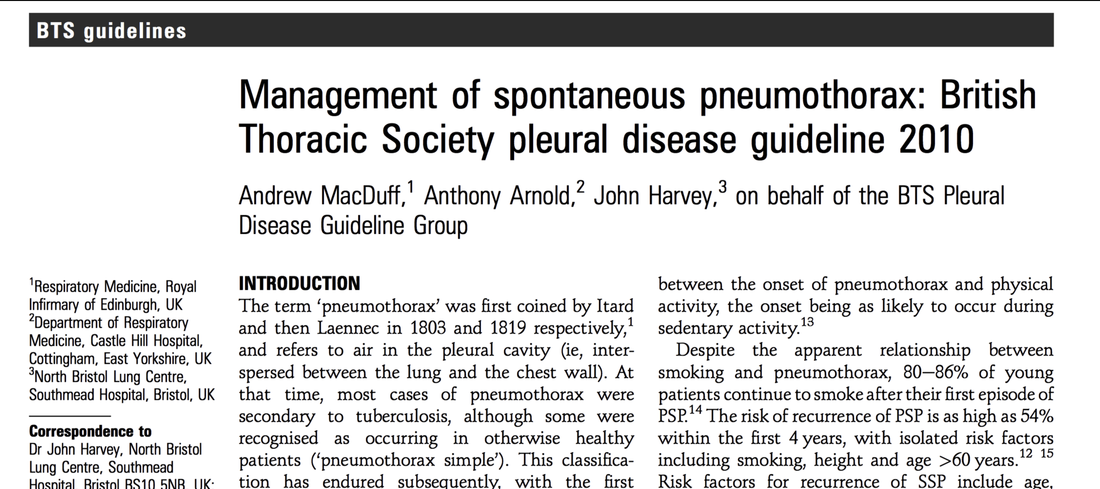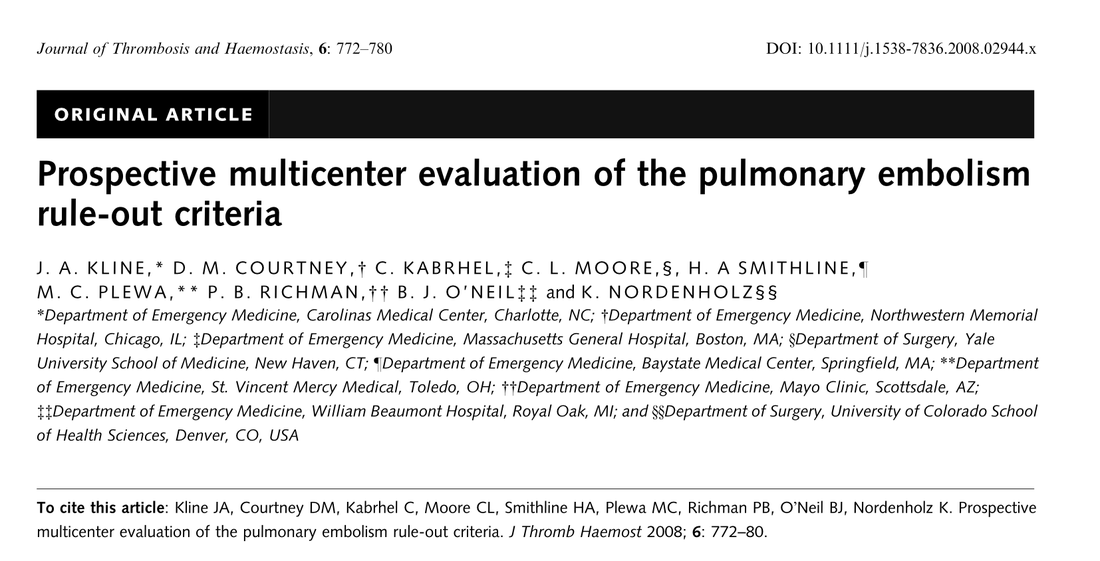MODULE 17: respiratory medicine
We have a quick look at some major topics in respiratory medicine. Pulmonary embolus is a ripe topic for examination, and has featured regularly in the past. Pneumothorax is another popular topic that candidates need to be aware of. Finally, understanding the role of NIPPV in COAD is essential. Understanding the assessment of asthma and having a good management algorithm (including a ventilation strategy) is also wise.
watch.
|
|
READ
Three papers for you to have a read of below.
1. The BTS guidelines for management of pneumothorax. It's always difficult to know which guidelines to quote when addressing pneumothoraces (and there's no real definitive answer). But the BTS guidelines are probably the safest to use. You only need to have a flick about halfway through the paper, up until the section on pleurodesis.
2. Kline's validation paper on the PERC rule. The background and discussion are worth looking at for some scientific discussion of the issues surrounding PE.
3. The Australian Asthma Handbook. Don't worry about all the GP type stuff, but have a read of pages 25-27 which concern acute asthma.
1. The BTS guidelines for management of pneumothorax. It's always difficult to know which guidelines to quote when addressing pneumothoraces (and there's no real definitive answer). But the BTS guidelines are probably the safest to use. You only need to have a flick about halfway through the paper, up until the section on pleurodesis.
2. Kline's validation paper on the PERC rule. The background and discussion are worth looking at for some scientific discussion of the issues surrounding PE.
3. The Australian Asthma Handbook. Don't worry about all the GP type stuff, but have a read of pages 25-27 which concern acute asthma.
| asthma.pdf |
solve.
This one came up in 2010....
Discuss the investigations for a suspected pulmonary embolus in a 24 year old woman who is 10 weeks pregnant. (100%)
It's obviously a bit old fashioned, so let's modernise it a bit.
A 26 year old woman who is 15 weeks pregnant presents to your department complaining of pleuritic chest pain. She is P1G0 and has no medical history of note.
Her vital signs are:
Question 1.
Describe your risk stratification of this patient.
Question 2.
Describe your imaging strategy for this patient.
Question 3.
How will you minimise any imaging risks to this patient for your chosen imaging modality?
Have a go at the questions (either the old one or the new ones). This is a controversial issue so we are going to ask you to post your answers on the VSG before you click the link below for one possible response.
Discuss the investigations for a suspected pulmonary embolus in a 24 year old woman who is 10 weeks pregnant. (100%)
It's obviously a bit old fashioned, so let's modernise it a bit.
A 26 year old woman who is 15 weeks pregnant presents to your department complaining of pleuritic chest pain. She is P1G0 and has no medical history of note.
Her vital signs are:
- HR 95
- BP 120/80
- RR 16
- Sats 99% RA
- T 37.0 oC
Question 1.
Describe your risk stratification of this patient.
Question 2.
Describe your imaging strategy for this patient.
Question 3.
How will you minimise any imaging risks to this patient for your chosen imaging modality?
Have a go at the questions (either the old one or the new ones). This is a controversial issue so we are going to ask you to post your answers on the VSG before you click the link below for one possible response.
write.
This question carries on from the question above:
1 Prepare a Flow diagram with your approach to investigating the pregnant patient with suspected PE.
2. Produce a table with the radiation risk for the follow i.e.., what is the radiation and what it means for different age groups:
1 Prepare a Flow diagram with your approach to investigating the pregnant patient with suspected PE.
2. Produce a table with the radiation risk for the follow i.e.., what is the radiation and what it means for different age groups:
- CTPA
- VQ
- CT chest
- CXR
- CT ABDO
- CT BRAIN
- CT CERVICAL SPINE

